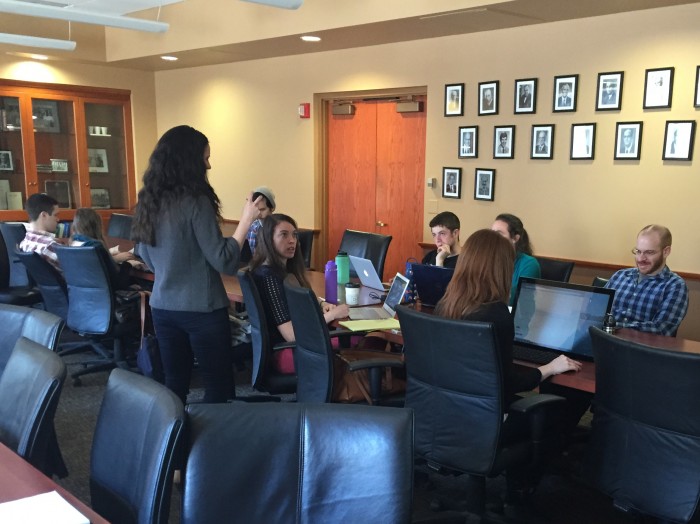For the past few months, we have been working with the Solar Fuels Institute, under the sponsorship of the Office of Research at Northwestern University, to create an international repository for solar fuel research. This new repository will have metadata for over 77,000 scientific papers, but that’s not where this project ends. That’s just the beginning.
The SOFI team, led by Dick Co, is interested in standardizing the way in which solar fuel researchers access and categorize papers. Essentially, the goal is to take all 77,000 of these papers and collect organized information to help enrich the resources.
“What type of catalyst was reported in this paper?”
“Is an electrolyte used?”
“Well then, what was the Faradic Efficiency?”
To answer these questions, the NUIT A&RT AMPS web team is leveraging crowd-sourcing and gamifcation techniques. With a few clicks, experts in the field can register and begin entering information to the Knowledge Map, collecting points and badges along the way.
But it’s not just expert solar scientists who will be earning those points and badges. The Knowledge Map will scale to a varied level of user expertise. A high-school student, for example, could log-in to the Knowledge Map and contribute by categorizing papers and entering whatever information can be ascertained from an abstract.
This project marks the largest ever development for the NUAMPS web team, and in order to stay on track with our deadlines, we’ve been working in an agile development workflow. As part of this workflow, and in the spirit of “early delivery and continuous improvement” we just recently wrapped up our first ever “SOFI Hack-A-Thon.”
The SOFI team provided fresh donuts, and we received very valuable feedback on an even fresher version of the SOFI Knowledge map.
This is something Rodolfo and I would love to do again with future projects. It was incredibly valuable to see how real-world users interact with a site from this early on in the development process. This means we have plenty of time to refine and enhance the user experience before moving on to final launch.

